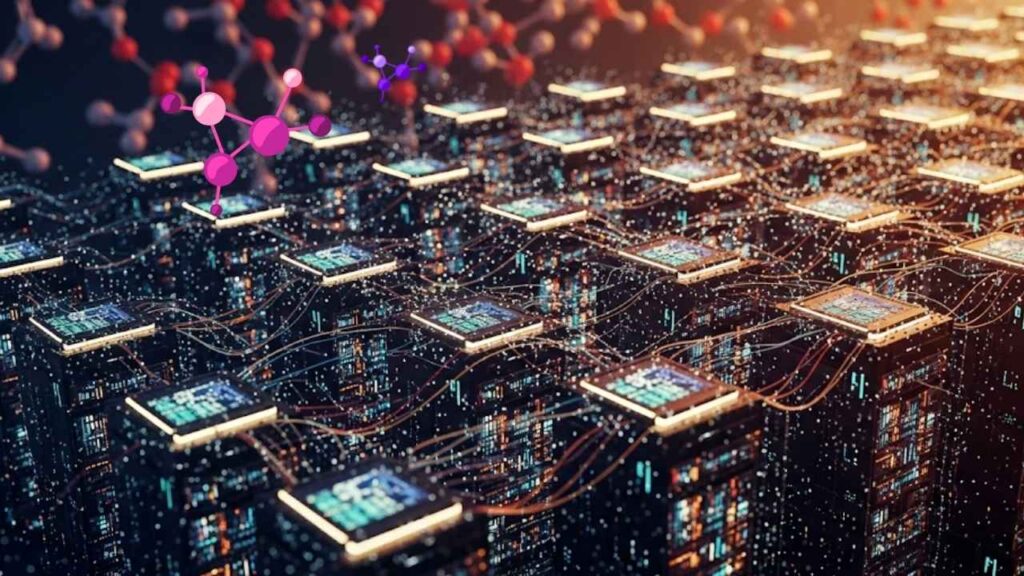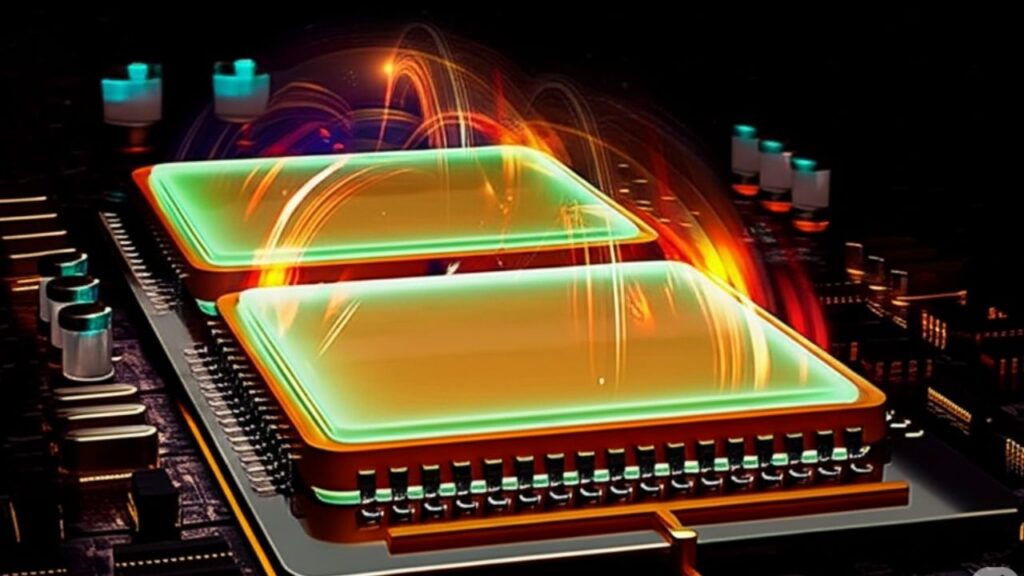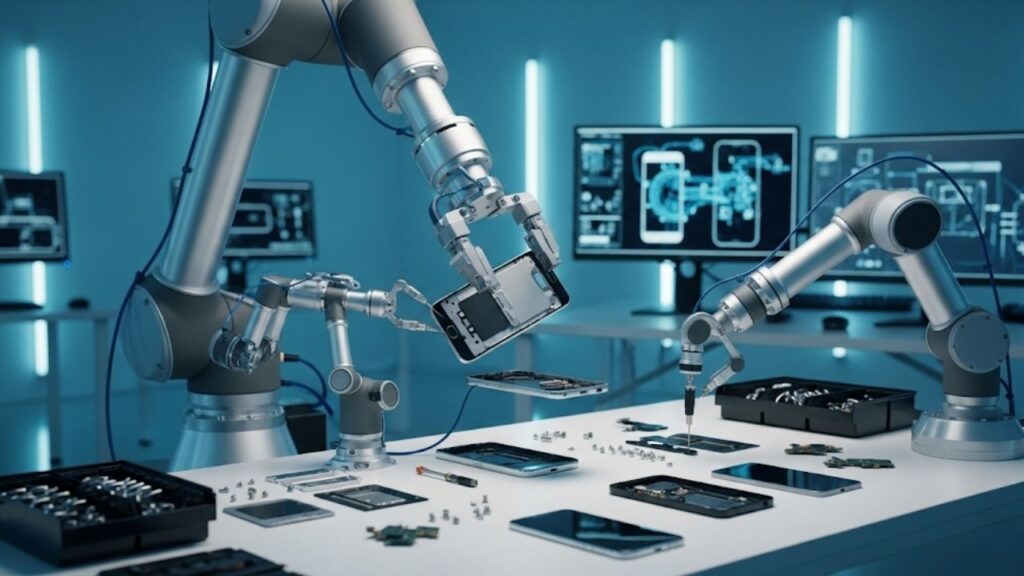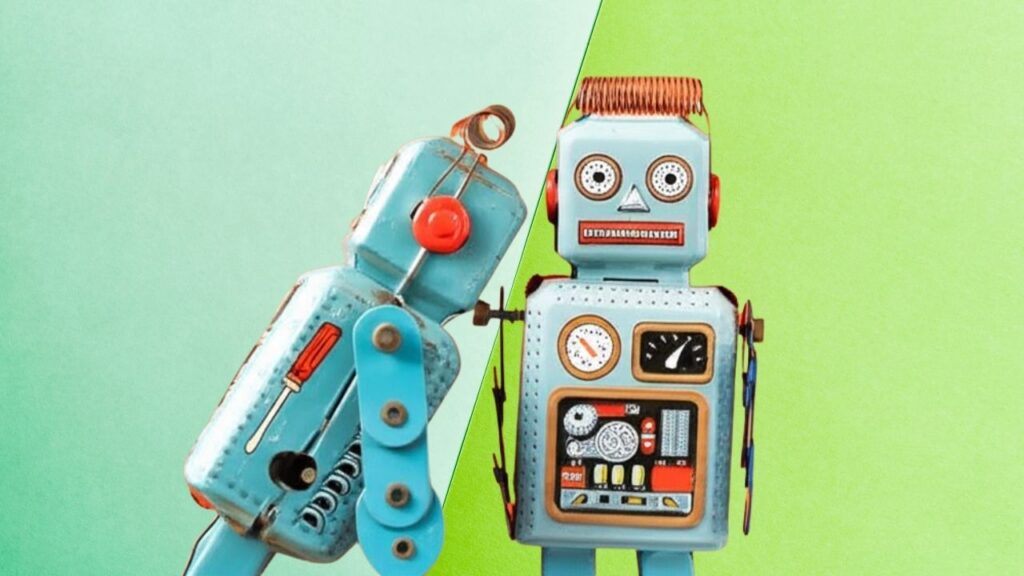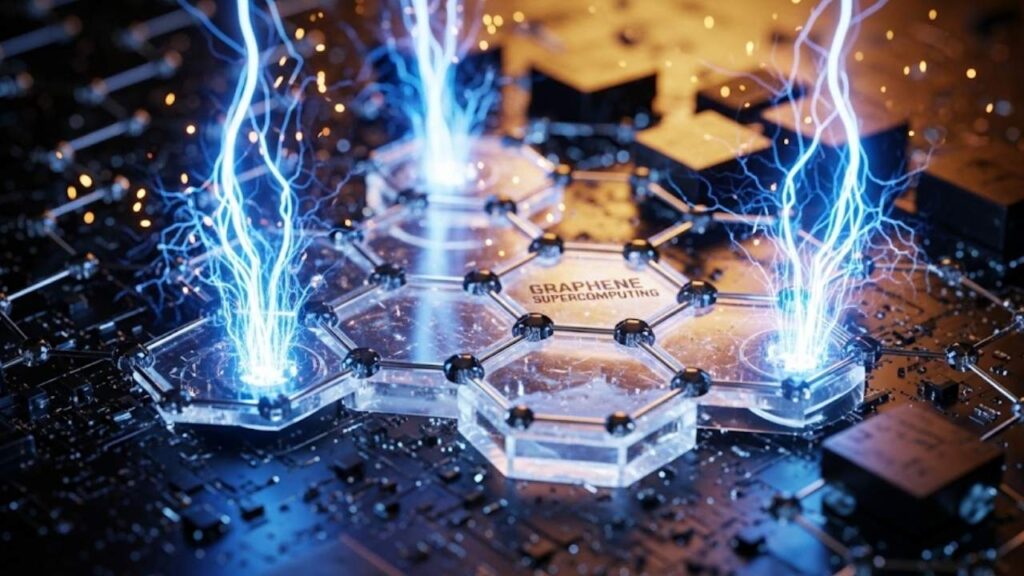Imagine a computer that runs not on silicon, but on clusters of living, lab-grown brain cells. This is no science fiction: living computers powered by brain organoids—tiny, three-dimensional brain models made from human cells—are advancing rapidly in labs worldwide. These systems represent an emerging field called organoid intelligence (OI), and while still experimental, they could someday revolutionize computing, medicine, and artificial intelligence. Here’s what you need to know—whether you’re a curious student, a health professional, a tech enthusiast, or a policymaker.
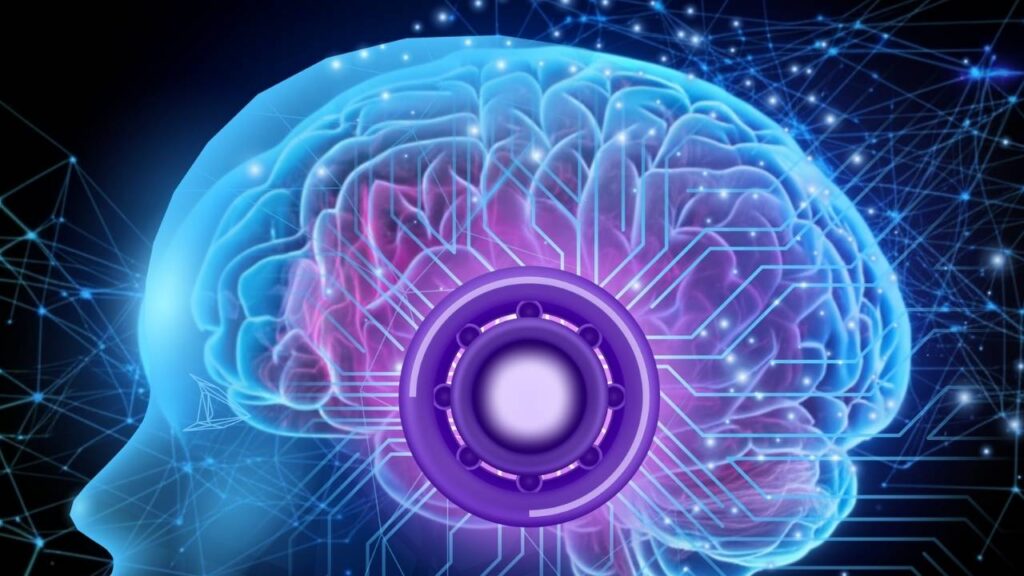
Table of Contents
What Are Living Computers and Organoid Intelligence?
Organoid intelligence (OI) is the idea of using lab-grown, three-dimensional human brain organoids—clusters of thousands of brain cells, not just single layers—as the “processors” in new types of biocomputers. Unlike today’s silicon-based computers (which process information using electrons moving through wires on computer chips), OI systems move signals between real, living neurons that communicate with each other using electricity and chemicals, much like the neurons in your own brain.
Brain organoids are grown from stem cells—special cells that have the potential to turn into many different cell types—placed in conditions that coax them to form tiny, simplified versions of brain tissue. These organoids are not brains in the usual sense: they are much smaller, less organized, and cannot think, feel, or have consciousness. However, they can process information, learn from their environment, and even adapt their responses—something traditional computers cannot do on their own.
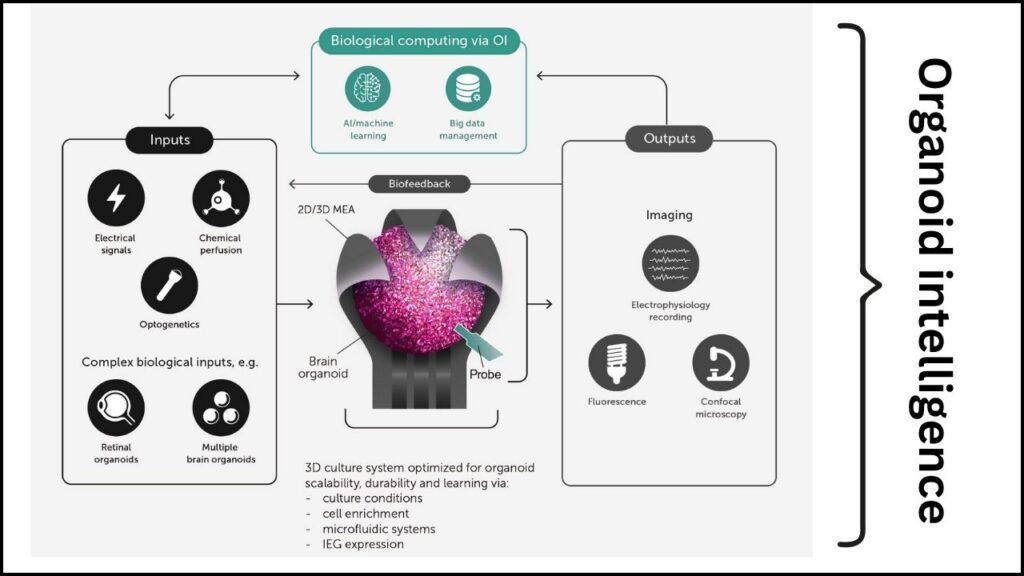
Organoid intelligence—living computers powered by lab-grown brain cells—is one of the most exciting frontiers in science and technology today. While still in the early, experimental phase, OI could someday transform how we compute, learn, and heal. It could make artificial intelligence more energy-efficient, accelerate the discovery of new medicines, and deepen our understanding of the human brain. The journey is just beginning, with many scientific, ethical, and technical challenges to overcome. But the potential is enormous—for students, scientists, doctors, engineers, and society as a whole.
As OI research continues, one thing is clear: the line between biology and technology is blurring. The computers of tomorrow may not just be artificial—they may be alive.
How Do Organoid Computers Work?
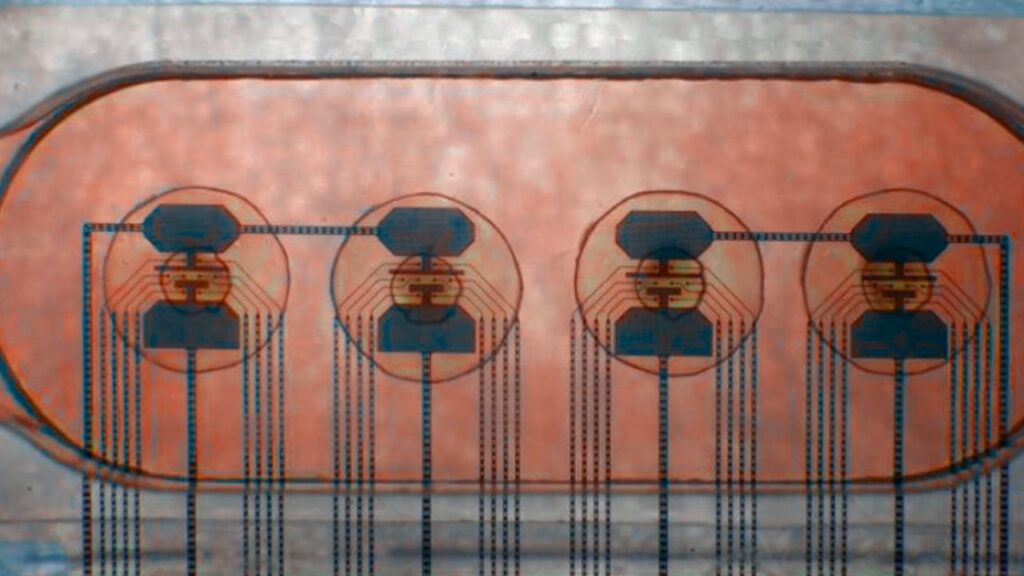
Let’s walk through how scientists are building and using organoid intelligence systems, step by step:
1. Growing Brain Organoids
Scientists start with human stem cells, often reprogrammed from skin or blood cells. These stem cells are placed in a special gel or liquid that encourages them to grow into three-dimensional mini-brains, called organoids. Over weeks or months, different regions of these organoids begin to resemble, at least in a basic way, different parts of the human brain. They contain neurons, support cells (called glia), and even rudimentary blood vessels.
2. Connecting Organoids to Computers
To make these organoids “computers,” scientists connect them to silicon electronics. Tiny microelectrodes—like microscopic wires—are embedded in the gel around the organoids. These electrodes both stimulate the neurons and record their electrical activity. In this way, computers can send signals in and receive signals out, allowing the organoid and the machine to work together.
3. Training and Learning
Like the brain, organoids learn through experience. When an electrode sends a pulse, certain neurons respond. If a neuron’s response is “correct” (for example, if it helps a robot move left in a game), the system reinforces that pathway with chemicals similar to those used in real brains, such as dopamine. Over time, the organoid adjusts its connections, becoming better at the task—a process called synaptic plasticity.
4. Interfacing with the Real World
The ultimate goal is not just to have organoids “learn” in a dish, but to connect them to real-world devices—such as robots, sensors, or even other organoids. Future systems might combine brain organoids, eye organoids, and other “organ on a chip” technologies to make machines that see, learn, and adapt in ways much more like living beings than today’s computers.
5. Integrating with Artificial Intelligence
Many researchers envision a future where organoid intelligence works alongside (and possibly inside) today’s artificial intelligence systems. The chemical, ever-changing nature of real neurons might be especially good at learning tasks where adaptability and pattern recognition are key, while traditional silicon-based AI could handle tasks that require fast, repeated calculations.
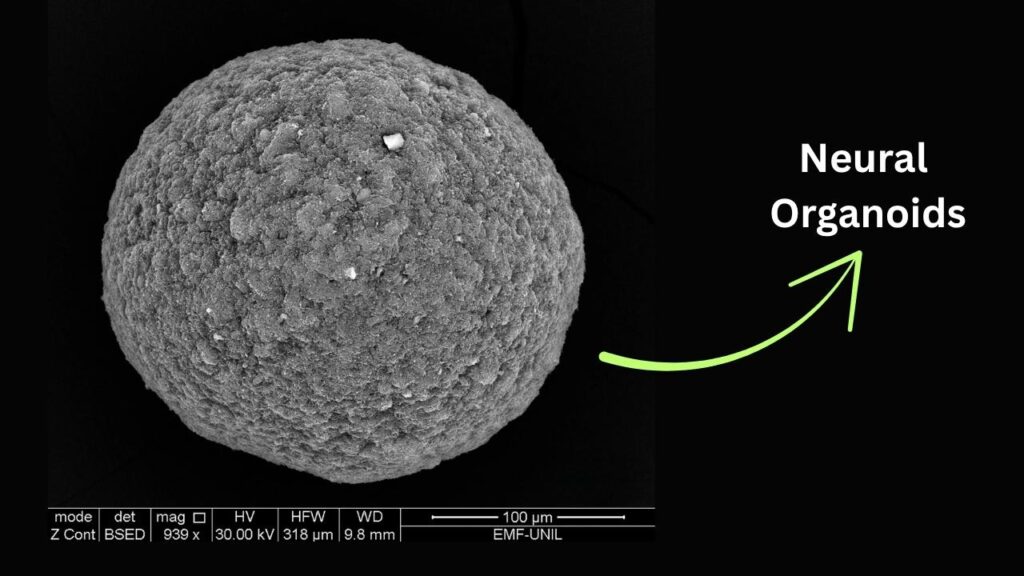
Why Are Scientists and Society Excited? The Promise of OI
Energy Efficiency
The human brain is a marvel of efficiency, running on about 20 watts—the same as a dim bulb. Compare this to a modern supercomputer, which can use tens of millions of watts for similar tasks. Organoid-based computers could, in theory, process information more efficiently than the most advanced silicon chips. This could dramatically reduce the enormous energy demands of artificial intelligence and data centers.
Faster, More Flexible Learning
Neurons in the brain can form trillions of connections, and these connections can change in real time, based on experience. This plasticity gives biological intelligence a massive advantage in tasks that require learning, adaptation, and creativity. While today’s AI systems are trained on mountains of data and require lots of energy, organoid intelligence might be able to learn from just a few examples, with much less energy and data.
Medical Research and Drug Discovery
One of the most promising applications of organoid intelligence is in healthcare and drug discovery. By growing organoids from patients with diseases like Alzheimer’s, autism, or epilepsy, researchers can study how these disorders develop at the cellular level, and test new drugs on actual human brain tissue—without risking harm to living patients. This could accelerate the search for effective treatments for some of the most devastating neurological conditions.
New Ways to Study the Brain
OI also opens up new ways to study how the brain works, learns, and remembers. Because organoids can be grown in labs, scientists can control the environment, manipulate certain genes, and watch what happens—providing insights into brain development, learning mechanisms, and even the nature of intelligence itself.
Real-World Progress: What Have Scientists Actually Achieved?
While full-scale organoid-based supercomputers are not here yet, the field has already achieved remarkable milestones:
- Learning simple tasks: Scientists have taught brain organoids to “play” simple games (such as moving a paddle in a version of Pong), responding to electrical stimulation and feedback, much like a living brain learns from experience.
- Modeling diseases: Organoids grown from cells of patients with neurological diseases are being used to study disease mechanisms and test new drugs—revolutionizing research into conditions like Alzheimer’s, autism, and epilepsy.
- Combining with robots: Some experimental systems have organoids connected to robots, allowing the robot to “learn” simple behaviors from the living brain tissue.
- Commercially available platforms: Companies like FinalSpark in Switzerland offer platforms where researchers can “rent” time on brain organoid computers for experiments, accelerating progress in both neuroscience and AI.
Organoid Intelligence vs. Traditional Computing: A Side-by-Side Look
| Feature | Traditional (Silicon) Computers | Organoid Intelligence (OI) Systems |
|---|---|---|
| Material | Silicon, metal, plastic | Living human brain cells, lab-grown organoids |
| Energy Use | Millions of watts for complex tasks | Potentially just a few watts |
| Learning | Needs huge datasets, fixed algorithms | Learns from experience, adapts in real time |
| Flexibility | Hardwired, reprogrammed as needed | Self-organizing, plastic, learns as it goes |
| Applications | General purpose, AI, data processing | Disease modeling, AI, brain research, robotics |
| Maintenance | Robust, can last for years | Needs life support, delicate to grow and keep |
| Ethical/Legal Issues | Data privacy, AI bias | Consent, dignity, rights for lab-grown tissue |
The Challenges: Not So Fast!
Technical Hurdles
Making organoids intelligent enough for real-world computing is a massive challenge. Today’s organoids are tiny, simple, and lack the organization and complexity of even a mouse brain. Scaling up to a human-brain equivalent—should that even be possible—would require orders of magnitude more cells, organized connections, and better ways to keep them alive and communicating.
Ethical Questions
As organoids become larger and more complex, deep ethical questions arise. At what point, if ever, could an organoid develop awareness, consciousness, or even feelings? While today’s organoids are simple enough that this is not a concern, the future may bring new responsibilities for researchers and society. Leading projects—such as the Johns Hopkins-led Organoid Intelligence Initiative—include ethicists from the start, to guide responsible innovation.
Practical Issues
Growing and maintaining organoids is difficult, expensive, and labor-intensive. They require constant care, living in specialized incubators with food, warmth, and waste removal. Scaling up from a few thousand cells to billions—as in the human brain—would require major breakthroughs in bioengineering and automation.
Regulatory and Social Considerations
As with any new technology—especially one involving human tissue—public understanding, ethical oversight, and responsible regulation will be crucial. The public, scientists, industry, and policymakers will need to work together to ensure OI develops in a way that is safe, ethical, and beneficial for all.
Careers in Organoid Intelligence: Who’s Building the Future?
The rise of OI is creating new careers and specialties at the crossroads of biology, computer science, engineering, medicine, and ethics. Here are just a few emerging roles:
- Organoid/Bioengineers: Scientists who specialize in growing, maintaining, and experimenting with brain organoids.
- Neuro-AI Specialists: Professionals who bridge neuroscience and artificial intelligence, designing systems where living neurons and artificial intelligence work together.
- Medical Researchers: Those using organoids to model diseases, test new drugs, and uncover the secrets of brain health and disease.
- Ethical and Policy Advisors: Experts who help navigate the new moral, legal, and social questions raised by OI.
- Data Scientists: Specialists who process and interpret the massive datasets generated by organoid computers.
For students and young professionals, this is a fast-growing field with opportunities in academia, industry, government, and even startups.
Global Hotspots and Leading Institutions
Research into organoid intelligence is truly international. Major centers include:
- Johns Hopkins University (USA): A global leader in brain organoid science and OI research.
- FinalSpark (Switzerland): Developer of a commercial, cloud-accessible organoid computing platform.
- Luxembourg Centre for Systems Biomedicine (LCSB, Luxembourg): Known for cutting-edge organoid and biocomputing research.
- University of California, Yale, and other universities worldwide: All advancing the science and technology of OI.
Collaborative communities, such as the Baltimore Declaration group, are bringing together experts from around the world to set standards, share progress, and address ethical and technical challenges together.
Getting Involved: How Can You Learn More and Contribute?
If you’re curious about organoid intelligence, there are many ways to get involved:
- Study STEM fields: Biology, chemistry, computer science, engineering, neuroscience, bioethics—all are valuable backgrounds for future OI professionals.
- Follow leading journals and conferences: Many breakthroughs are announced in open-access journals and at scientific meetings.
- Join research projects: Universities and companies are increasingly offering internships and research opportunities in organoid science and biocomputing.
- Participate in public discussions: As OI moves forward, public engagement will be vital to shaping its future in a responsible, inclusive way.
Smart Brain Implants Show Promise in Transforming Parkinson’s Disease Treatment
AI-Powered Chip Sets New Record in Brain-Like Computing Using Just Light and Silicon
Israeli Scientists Reveal the World’s First Brain-Like AI Chip That Teaches Itself
FAQs About Living Computers Powered by Brain Cells
Q: Are brain organoids conscious?
A: No, today’s organoids are far too simple to have thoughts, feelings, or consciousness. They are tools for research and computing, not mini-brains.
Q: How close are we to having a real organoid supercomputer?
A: Current organoid computers are still in the early stages. They are much simpler than even a mouse brain, and it will likely take decades—if ever—before they reach the complexity or capability of the human brain.
Q: What are the main risks and ethical concerns?
A: As organoids become more complex, questions about ethics, dignity, consent, and rights will become more important. Leading projects include ethicists to help address these issues as technology advances.
Q: Can organoid computers replace traditional computers?
A: Not in the foreseeable future. Organoid intelligence is likely to complement, not replace, silicon-based computing—especially in areas like brain research, drug discovery, and adaptive AI.
Q: Are there organoid computers available for use today?
A: Yes, but only for research. A few companies and labs offer organoid-based computing platforms for scientific experiments, but these are not for general consumer use.


